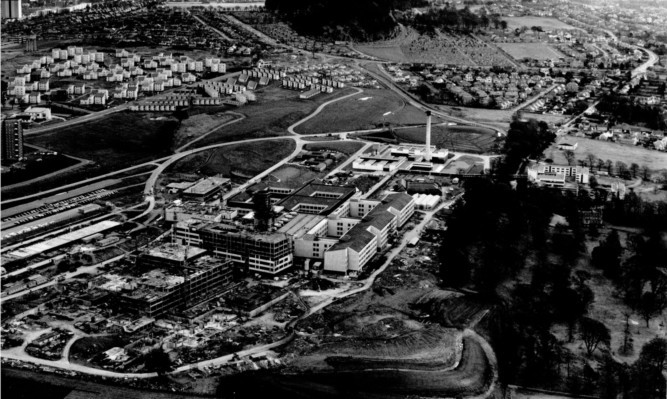Happy birthday to the National Health Service, which officially becomes a pensioner.
As part of the celebrations on the 65th anniversary of the NHS, The Courier takes a look back at some of the iconic buildings which provided healthcare for thousands of patients around the time the NHS was created in 1948.
Dr Graham Lowe, curator of Tayside Medical History Museum, points out that before then, there were 54 establishments across Tayside providing beds for over 8,000 patients.
Over the next generation many of those buildings disappeared or were transformed as healthcare needs changed and the way in which treatment was delivered evolved to the point where there are now only 2,000 beds within 21 buildings across the region.
Here, Dr Lowe takes readers on a trip down memory lane to look at the changes through the years in where NHS Tayside delivers care.
“Following the creation of the NHS, the newly-formed NHS Eastern Regional Hospital Board immediately set about rationalising in-patient facilities, a process that has continued to this day as changing patterns of disease and medical practicehave modified the region’s hospital infrastructure.
“As an example of changing patterns of care, people who in earlier times might have succumbed to one of the many prevalent infections are now living on to suffer from degenerative diseases of old age.
“In 1951 Tayside became the first region in Scotland to provide a geriatric service, and from modest beginnings at the old Poor Law institution beside Maryfield and the Bughties in Broughty Ferry, around 500 beds across the region now providecare for the elderly, rehabilitation and psychiatry of old age.
Gallery: The NHS marks its 65th anniversary
“So the old infectious disease hospitals at Kings Cross, Little Cairnie (Arbroath) and Whitehills (Forfar) have required to change their function no longer do we need hospitals for smallpox, or sanatoria for tuberculosis for which there were 645 beds at Ashludie, Sidlaw and Noranside in 1948.
“Infectious disease, however, remains an important issue in our general wards and the challenges of MRSA and C diff have to be tackled, just as our forebears had to deal with TB and smallpox, and those before them cholera and typhus.
“Stracathro and Bridge of Earn arose as emergency war hospitals. These were built over large areas to minimise expected air raid bomb damage.
“After the war both served (with over 1,500 beds) as general hospitals for the country districts, but with increasing medical specialisation and centralisation of hospital services their role declined, and Bridge of Earn subsequently closed.
“However, as the only functioning example of the original seven Scottish war hospitals, Stracathro received significant reinvestment into elective surgery and outpatient services including care for the elderly, stroke and cancer patients.
“After the Second World War, the board had hoped to concentrate all acute hospital services for Dundee on one site, but a centrally-imposed bed limitation necessitated a complete reappraisal of content and function of a new hospital.”
